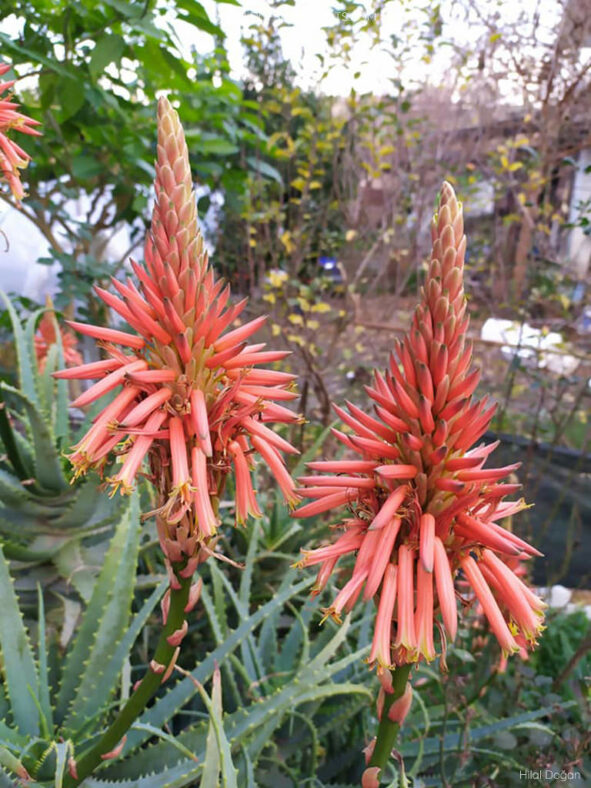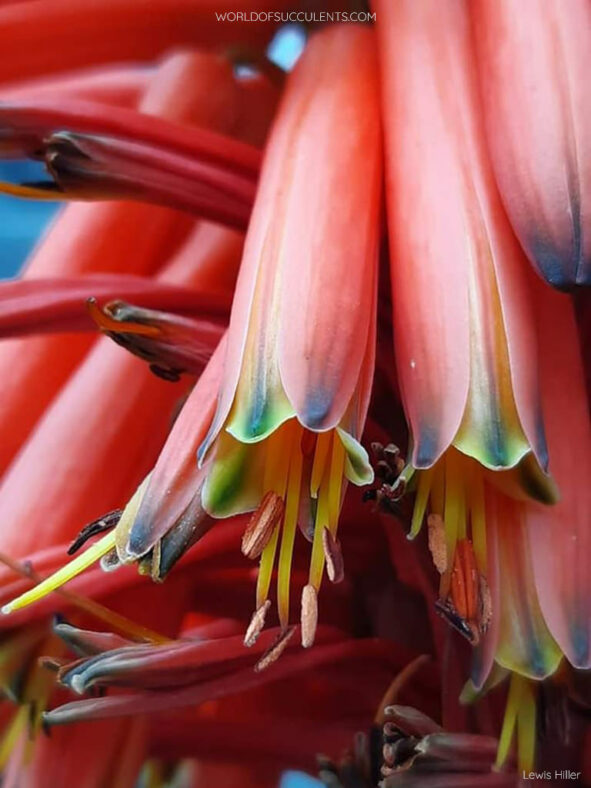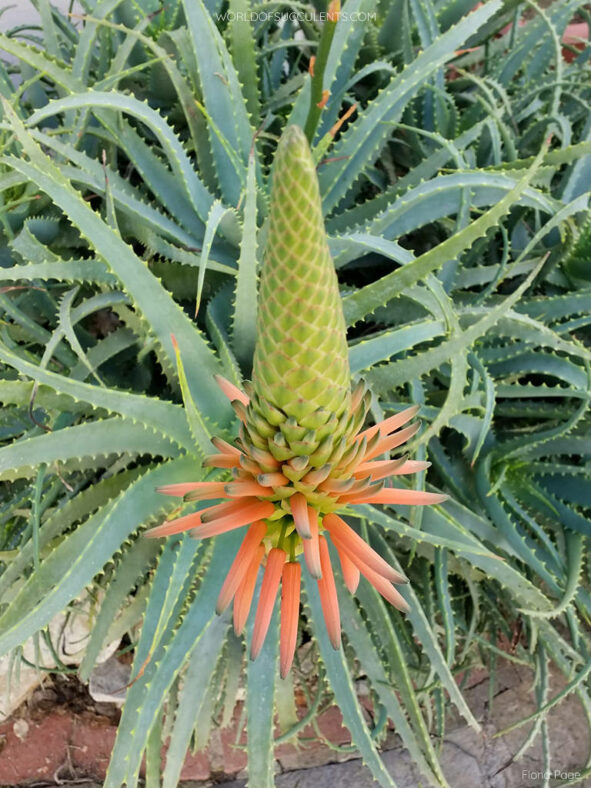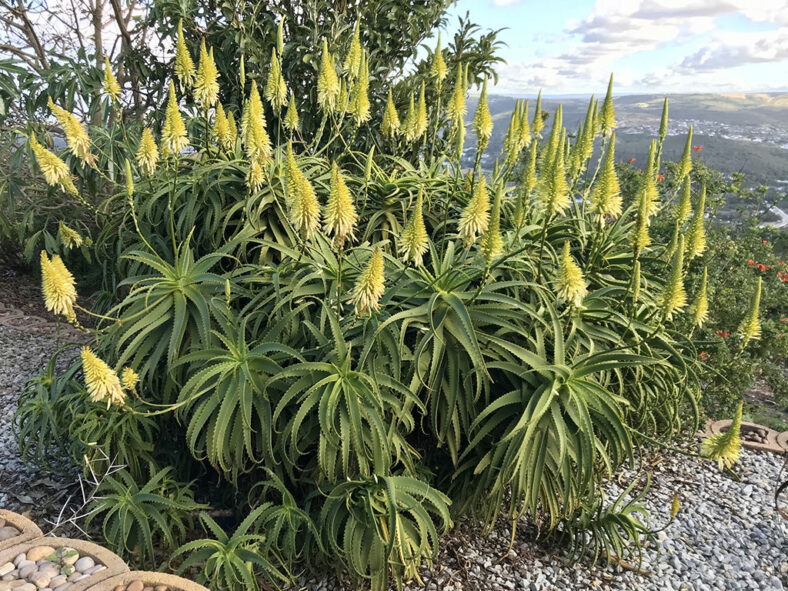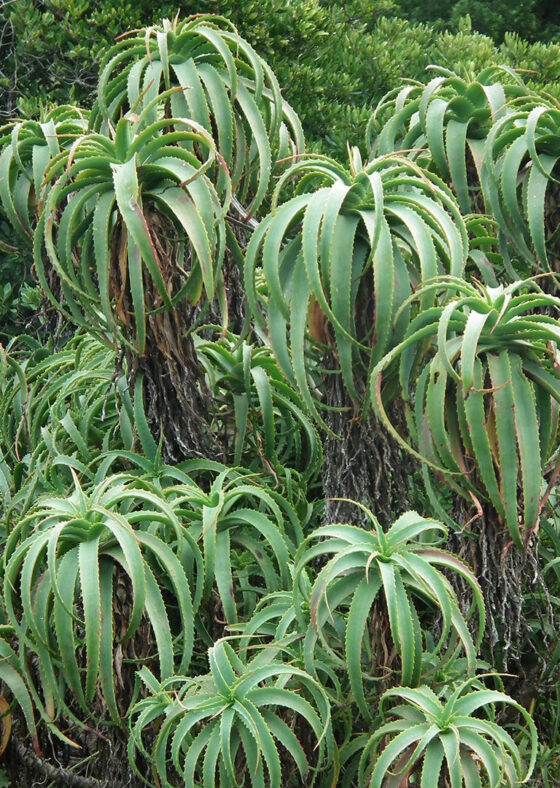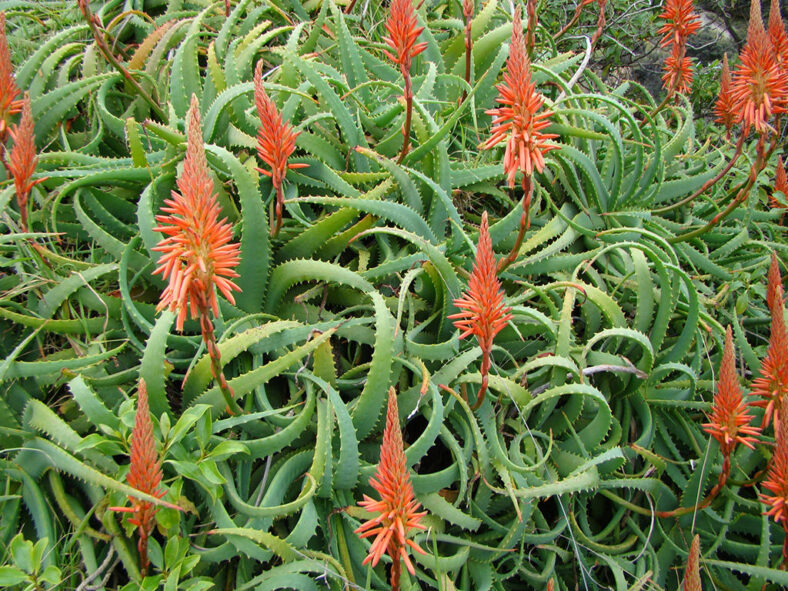Besides its attractive foliage and colorful flowers, Aloe arborescens is also valued for its medicinal properties.
Scientific Name
Aloe arborescens Mill.
Common Name(s)
Candelabra Aloe, Candelabra Plant, Krantz Aloe, Mountain Bush Aloe, Octopus Plant, Sword Aloe, Torch Aloe, Torch Plant, Tree Aloe
Synonym(s)
Aloe perfoliata var. arborescens, Catevala arborescens
Scientific Classification
Family: Asphodelaceae
Subfamily: Asphodeloideae
Genus: Aloe
Etymology
The specific epithet "arborescens" (pronounced "ar-bo-RES-senz") means "becoming a tree; tree-like" and refers to the tree-like growth of older specimens.
Origin
Aloe arborescens has an extensive natural distribution in southern Africa (Malawi, Mozambique, Zimbabwe, Botswana, South Africa, and Eswatini). It typically grows in pockets of rich soil on rocky outcrops, ranging from sea level to altitudes of over 6,000 feet (1,830 m).
Description
Aloe arborescens is a much-branched succulent shrub with thick, fleshy, spreading to slightly reflexed leaves clustered at the tips of the branches. It can grow up to 10 feet (3 m) tall and wide. The branches are re-branched from the base or higher and have old dried leaves that persist for 12 to 24 inches (30 to 60 cm) below the terminal rosette. The leaves can grow up to 24 inches (60 cm) long and 2.8 inches (7 cm) wide at the base, gradually narrowing to the apex. They typically have a flat upper surface, a convex lower surface, and margins armed with firm, pale teeth that are usually curved forward. The leaf color varies depending on the location and amount of sunlight received, from dull green to yellow-green, reddish, brownish, or sometimes gray-green and blue-green.
During the winter, conical, scarlet, orange-red, or rarely yellow flower spikes (racemes) rise in profusion above the foliage. The inflorescences are usually simple, sometimes with a short branch, and can grow up to 32 inches (80 cm) tall, including the raceme. They appear simultaneously from a rosette, 2 to 4 at a time. The densely flowered racemes can reach up to 12 inches (30 cm) in length and 4.8 inches (12 cm) in diameter. The flowers can measure up to 1.6 inches (4 cm) long.
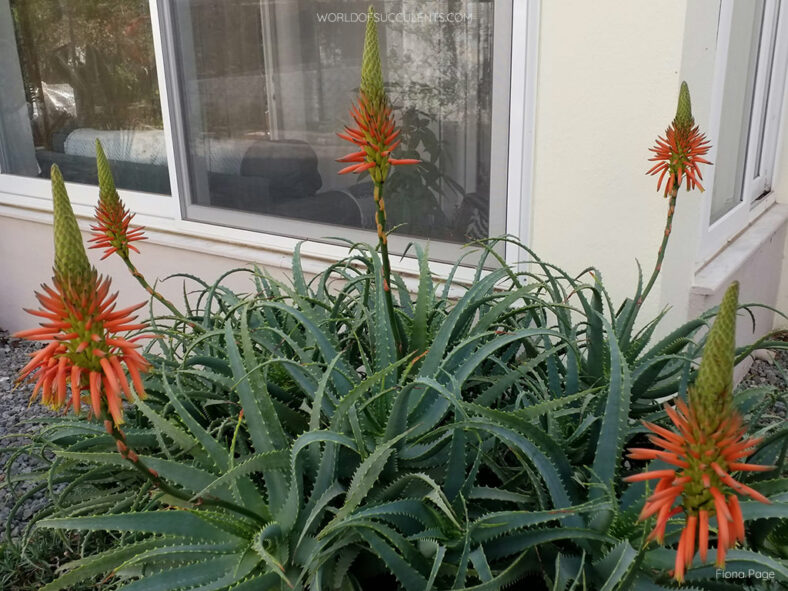
Subspecies and Forms of Aloe arborescens
- Aloe arborescens subsp. arborescens
- Aloe arborescens subsp. mzimnyati
- Aloe arborescens f. variegata
Cultivars and Hybrids of Aloe arborescens
How to Grow and Care for Aloe arborescens
Light: When growing Aloe arborescens indoors, place it in a window with plenty of bright, indirect sunlight. Rotate the pot once or twice a week to ensure all sides of the plant receive equal lighting. Outdoors, the plant prefers light shade, especially during the hottest parts of the day.
Soil: Great drainage is essential for growing this plant, as excessive moisture for an extended period can cause root rot. Use commercial soil for succulents, or make your own well-draining mix.
Temperature: This plant would be brought inside when temperatures drop below 50°F (10°C). It tolerates heat fairly well but will not survive a hard frost. Aloe arborescens grows best in USDA Plant Hardiness Zones 9b to 11b, with average minimum winter temperatures ranging from 25°F to 50°F (-3.9°C to 10°C).
Watering: This plant requires regular watering but can tolerate short periods of drought. Water deeply, but only when the soil is dry to the touch, and avoid allowing water to stand in the rosettes. Reduce watering during the winter months.
Fertilizing: Although it generally does not require fertilizer, Aloe arborescens will benefit from extra nutrients. Use a water-soluble fertilizer diluted to half the recommended strength.
Repotting: Repot only as needed during spring. Pick a container that is one size larger and has drainage holes.
Propagation: To propagate Aloe arborescens, remove the offsets from a mature plant from late spring to early summer. It is also easy to start from seeds. For best results, sow the seeds during the warm months.
Learn more at How to Grow and Care for Aloe.
Toxicity of Aloe arborescens
Although Aloe arborescens is known for its beneficial effects on human health, it can be mildly toxic to cats and dogs when ingested.
Links
- Back to genus Aloe
- Succupedia: Browse succulents by Scientific Name, Common Name, Genus, Family, USDA Hardiness Zone, Origin, or cacti by Genus
Photo Gallery
Click on a photo to see a larger version.
